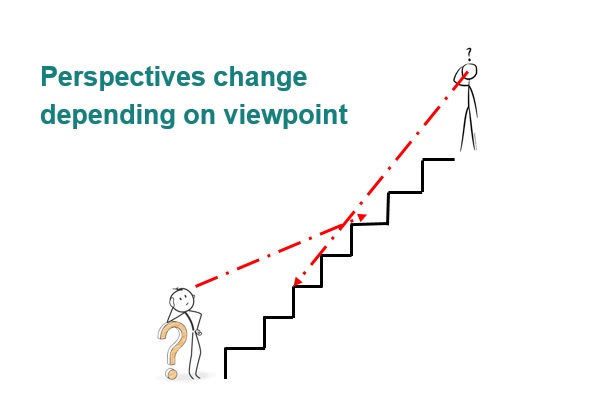‘Back from the future’ planning
It’s often said that hindsight is a wonderful thing, so if you actively build it into your planning, you might be able to spot pitfalls before they happen. John Tattersall, HR Director at People Puzzles, explains how ‘back from the future planning’ can give you a vital extra perspective.
If you’re running a business, you’re likely to have a business plan or at least a goal that you’re working towards. But how do you know what you need to do right now to achieve that goal? What do you need to do next month?
To help my clients create a step-by-step plan, I sometimes use an exercise that I like to call ‘back from the future’ planning. The idea is that you look at each step from a past, as well as future, perspective.
Here’s how it works:
1. Write down your goal
Articulating your dream might just be as simple as ‘double my turnover’, ‘launch a new product’ or even ‘exit the business so I can pursue other interests’. Whatever your goal is, write it down – on a flipchart if you have one – so that it’s fixed and tangible.
2. Define a timeline
Pick a specific date in the future when you would like to have achieved this goal. It might be six months from now, a year, or even three years’ time. Write this date on the flipchart and move the chart to where you perceive that point in the future to be. Walk back from the chart to where you perceive today to be and write today’s date on a sheet of paper on the floor.
Visualising that journey can really help gain perspective, so when I do this exercise with clients I ask: if your current position represents where you are now, how far away should that flipchart be? Think about how many steps you might need to get there. If your timeline is a year, you might want 12 steps between you and the flipchart, but pick whatever perspective suits you. Now you have a representation of your timeline.
3. Define ‘success.’
Now go back to your flipchart which represents when you achieve your goal. What will you do on that day? What will you see and hear? How will you feel? Write on the flipchart in simple language how you know that you have achieved your goal or objective and how you will feel.
4. Work back from the future
Now ask yourself: ‘What is the one thing that would have had to have happened just immediately before, for me to have achieved this goal?’ Write it down and take a physical step back to that moment (sometimes I use sheets with footprints on them as an extra visual aid). Ask yourself again what you would see, hear and feel in that step before you’ve achieved your goal.
5. Repeat back to the present
Take as many preceding steps as you need to take you back to the present, documenting each step. Place these in a line on the floor, anchoring the action that must have had to happen in order for the preceding step to have been true. If you reach your defined present day, but there are steps missing, move your goal further into the future so you can put more steps down. You will now have a line of steps taken laid out on the floor from your goal to the present day.
6. Walk back to the future again
Work forwards again, read your action steps and amend as necessary. It’s essential to go back the other way to ensure your steps make sense and follow in a logical order.
 Looking back in time is like looking down a flight of stairs, where you mainly see the treads of each step, as opposed to when you’re at the bottom where you only see mainly the risers. Moving initially from the future to ‘now’ and then from now to the future enables you to see the steps from two perspectives rather from traditional left to right planning where there is only one perspective. In other words, you see the risers as well as the treads. This acts as a check and balance to ensure the actions that need to be taken make sense
Looking back in time is like looking down a flight of stairs, where you mainly see the treads of each step, as opposed to when you’re at the bottom where you only see mainly the risers. Moving initially from the future to ‘now’ and then from now to the future enables you to see the steps from two perspectives rather from traditional left to right planning where there is only one perspective. In other words, you see the risers as well as the treads. This acts as a check and balance to ensure the actions that need to be taken make sense
7. Document your plan
Once each step has been documented from the past and future perspectives, put all the pieces of paper in order. You could put it into an Excel spreadsheet, a chart, or you could even put the papers directly onto your office wall if that works best for you.
The benefits of planning this way
This exercise often casts light on practicalities that might not have been considered before. I’ve seen clients who, after having walked back and forwards, realise that they hadn’t considered the logistics of recruiting more staff, such as where to put them or even where they might park. I remember an engineering company planning to expand into Germany, but it hadn’t occurred to them that no-one could speak German until they walked through their plan both ways.
No-one can predict the future and building the benefit of hindsight into your future plans could make all the difference in turning them into reality.
If you’d like to start with a workshop designed to help you realise your goals, call People Puzzles on 0808 164 5826.

John Tattersall, HR Director.

